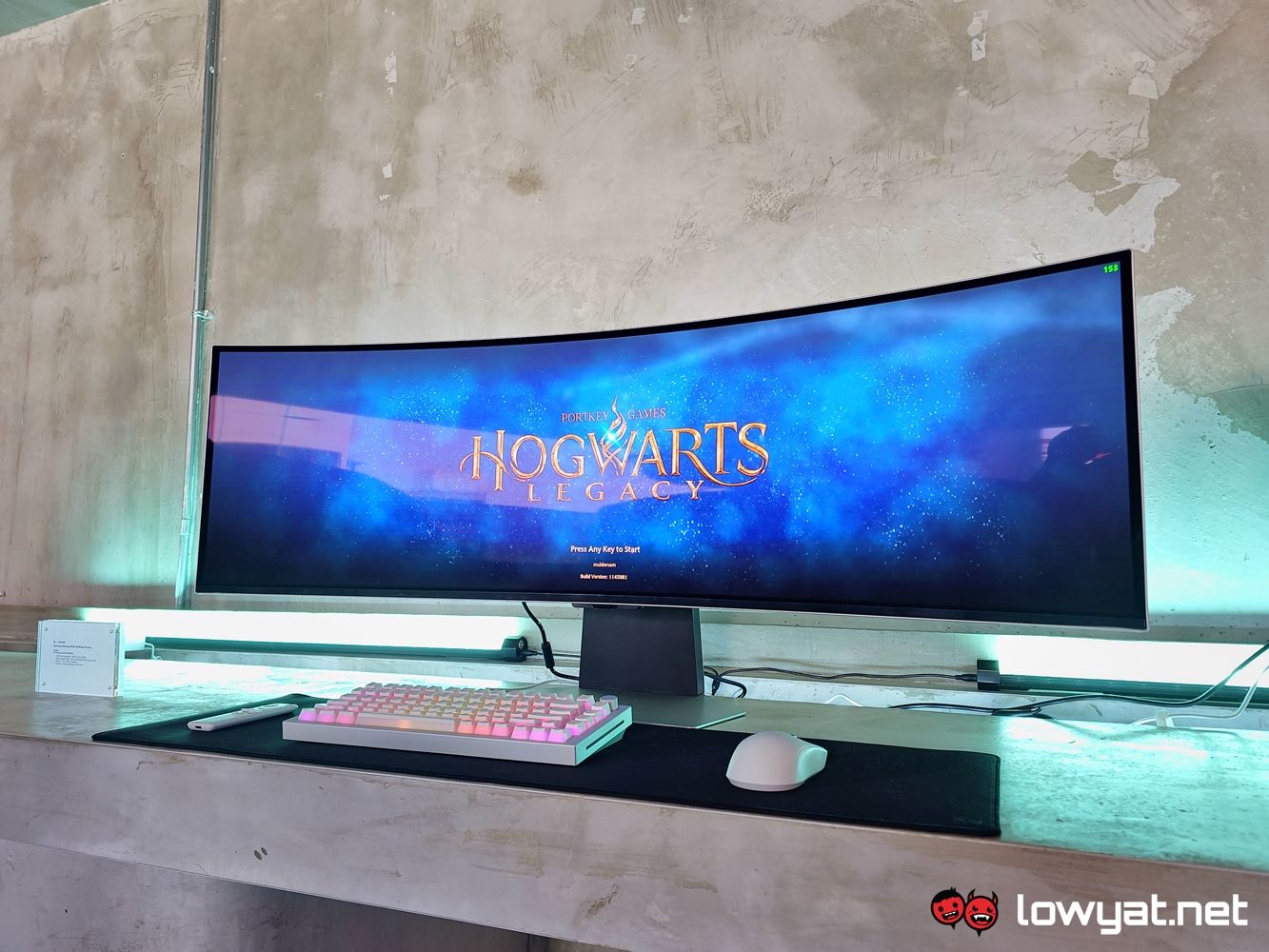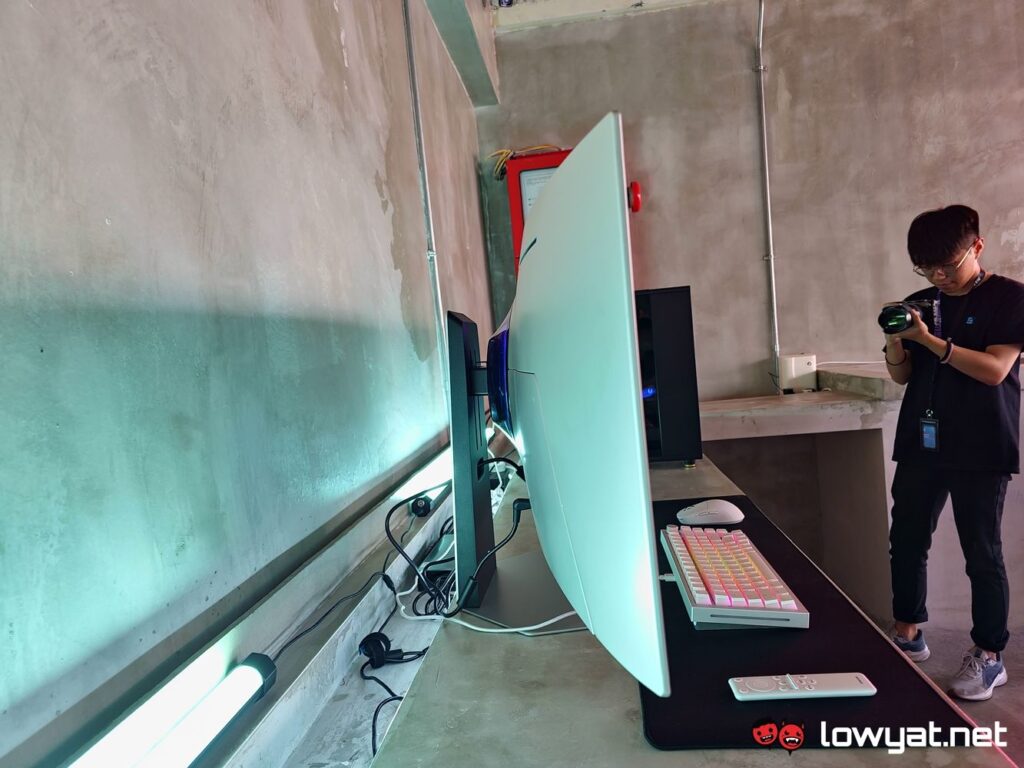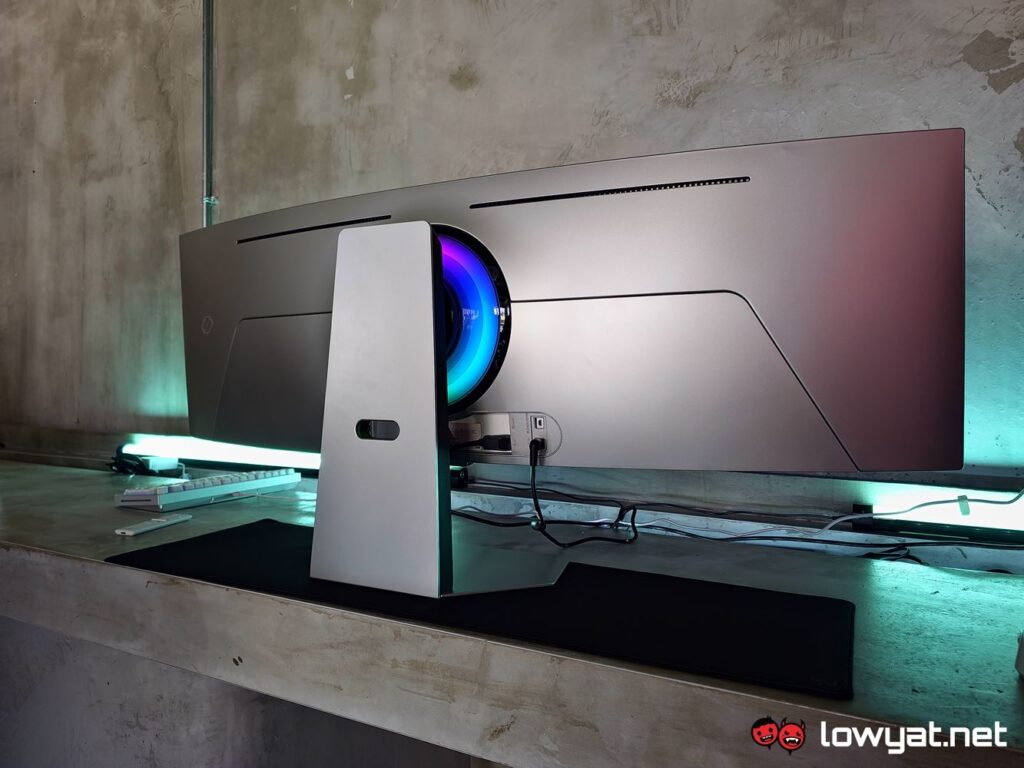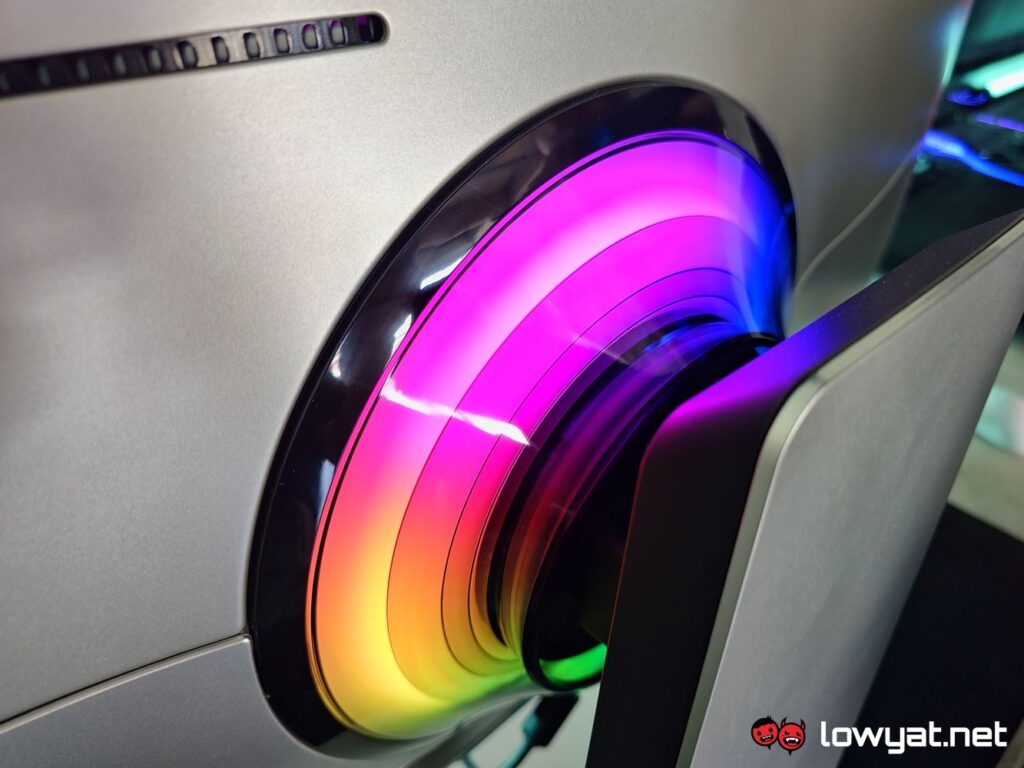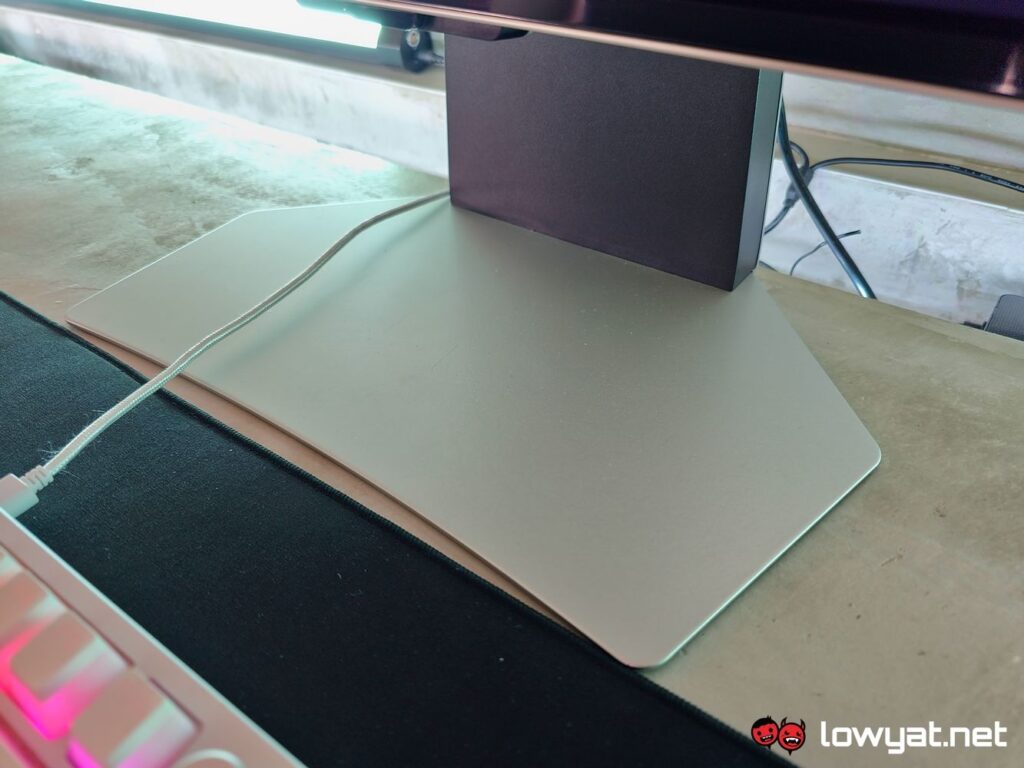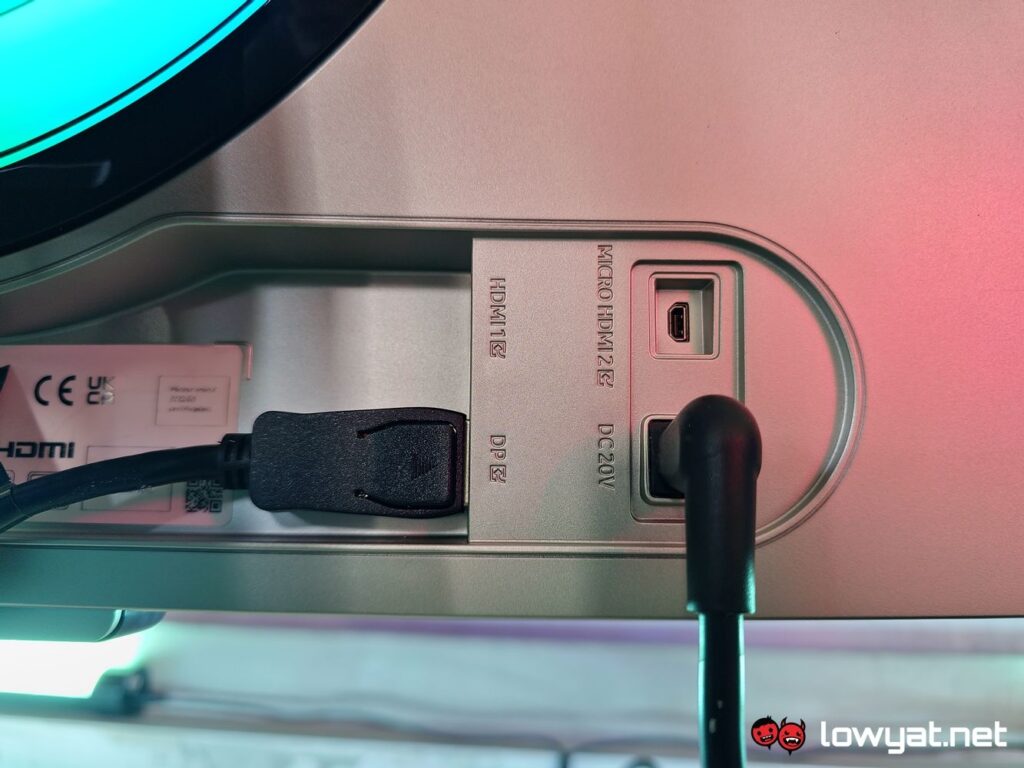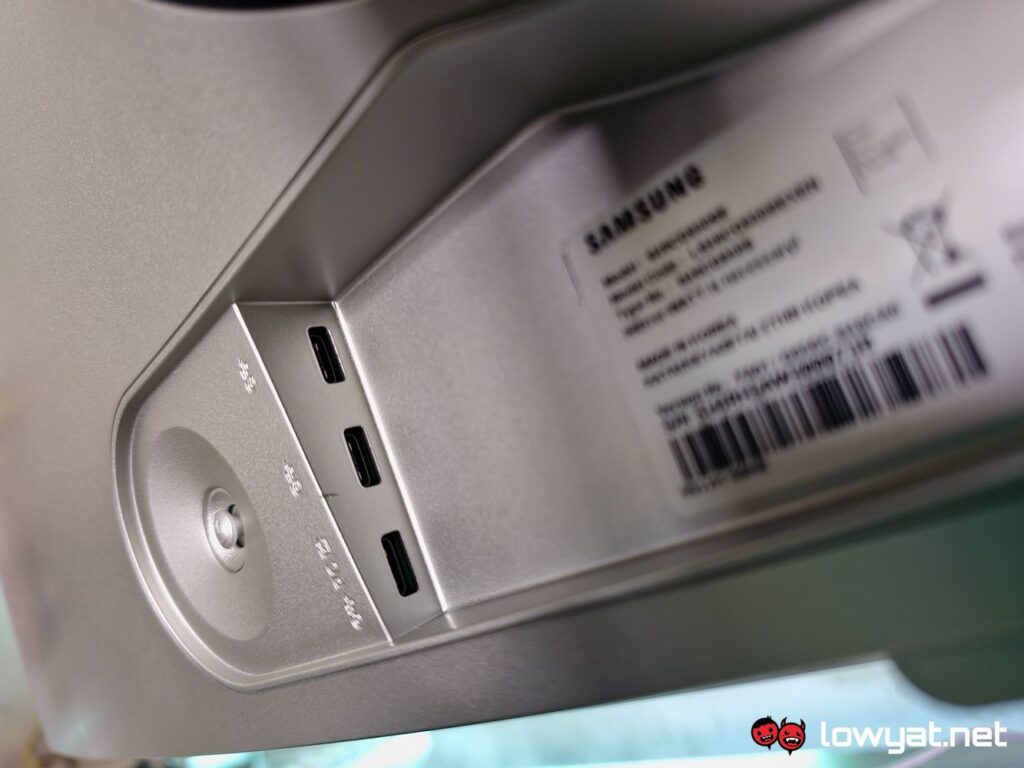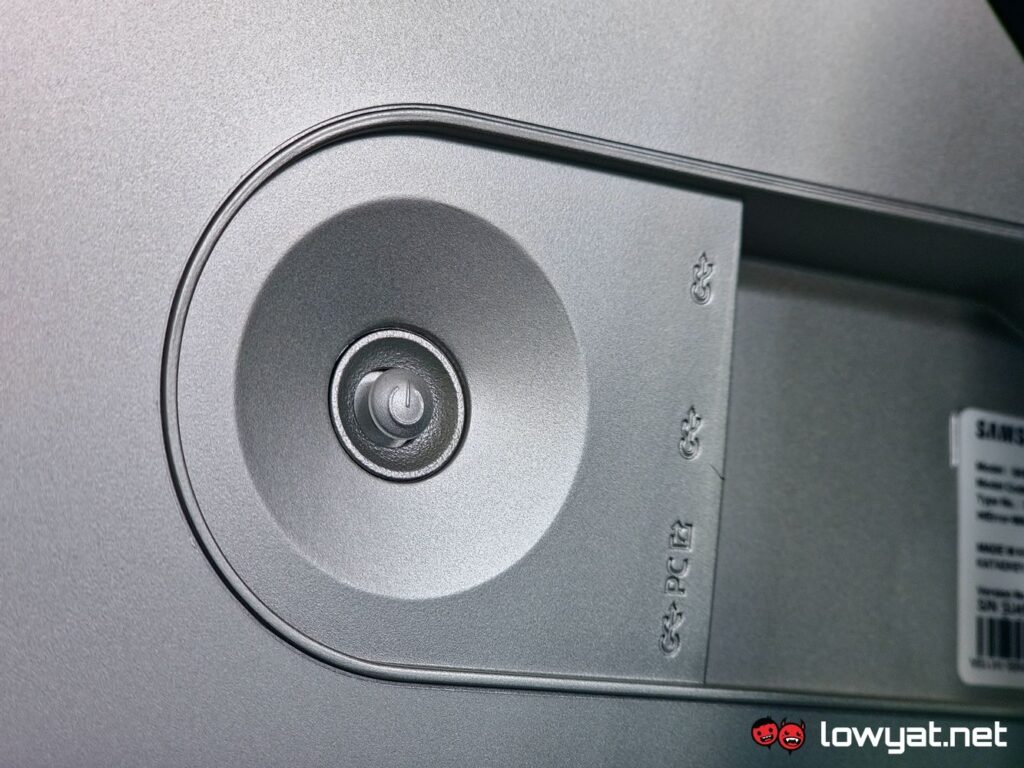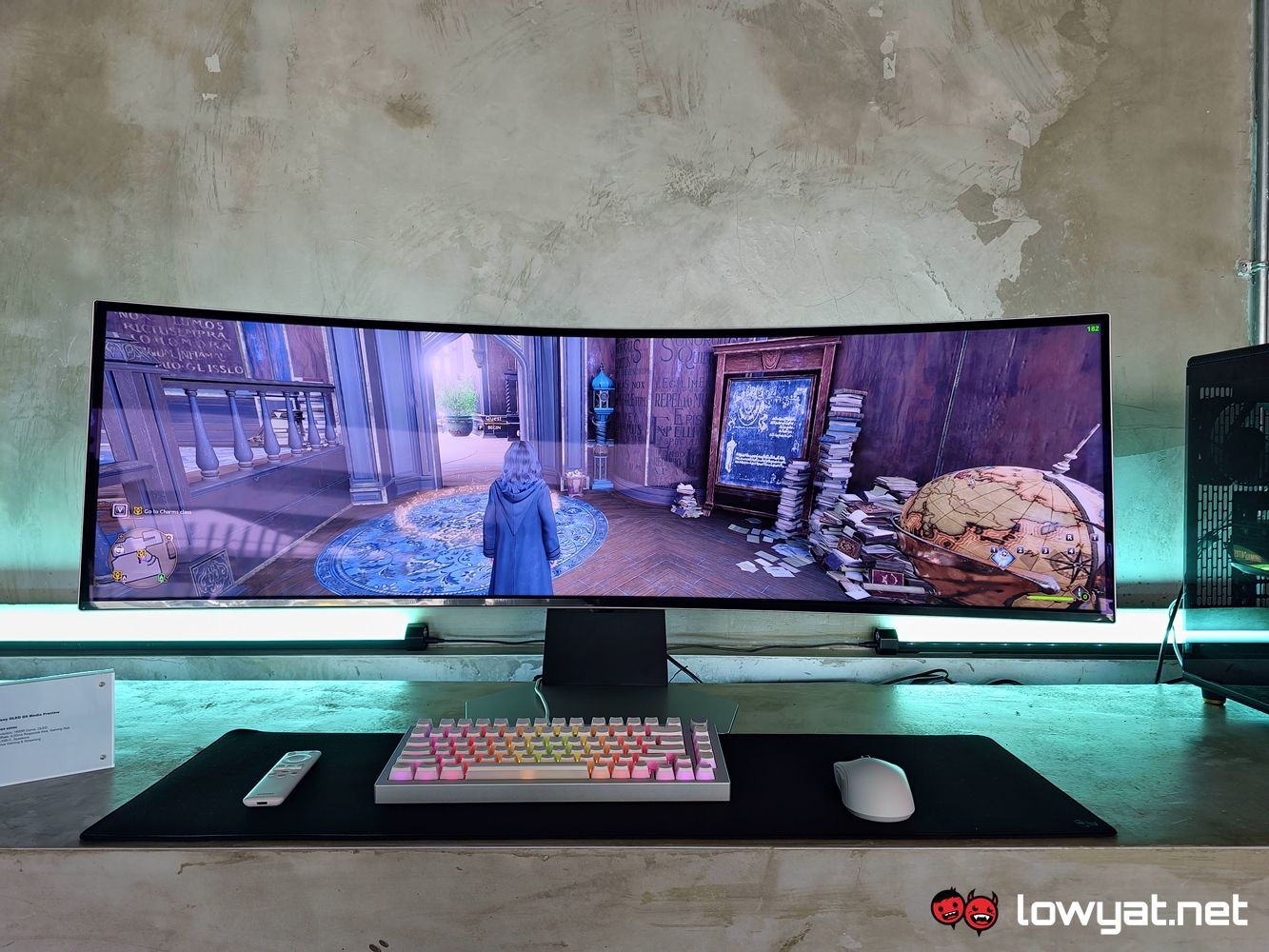Near the end of last month, Samsung confirmed that its latest ultrawide gaming monitor, the Odyssey OLED G9 will be arriving in Malaysia, but fell short of providing an official launch date. Thanks to SunCycle (SC), the official distributor of the monitor in Malaysia, we got an official launch window and a chance to see the unconventional display in the flesh.
Like all ultrawide monitors, you’re immediately greeted with just how vast the OLED G9 is. The DQHD resolution of 5120 x 1440 pixels and its 32:9 aspect ratio both effectively and technically makes it greater in resolution than even the standard 4K gaming monitor. And even if this is the baby brother of the more premium mini LED-equipped 57-inch Neo G9, the OLED panel on this one is still undeniably a looker. During the preview, SC ran Hogwarts Legacy as one of the demos; as is the nature of the game, it’s full of colours that popped out, while blacks were deep and white were blindingly bright. Of course, the fact that it is a 240Hz monitor is a massive plus point, but I am personally content with 144Hz.
The one issue that persists with any ultrawide monitor, and not just the OLED G9, is the viewing angle. Even with this monitor’s curved nature, I still find myself swivelling my head in either direction ever so slightly, mainly because the game’s UI is extended out of the corner of my eyes. I know this may seem like a non-issue for those among you that own ultrawide monitors, but as a person still using a 16:9 gaming monitor, it genuinely takes some getting used to.
Moving on, with a girth that large, I am glad that Samsung made the decision to use a heavy flat base for the OLED G9. It’s a trend that is being phased out by other brands, who often you the three-prong stand, with an asymmetrical design to boot (I’m looking at you, ASUS). And by heavy, I mean it is heavy – the bulk of the monitor’s weight clearly comes from the base and spine, the latter of which needs to be solid if it has any hope of holding up the panel.
For another matter, the aesthetics of the rear of the OLED G9 has been chiselled down, compared to its predecessor. Overall, it’s a plain design with the Odyssey logo on the left side of the panel. The RGB ring is, of course, still present and still one of the highlights of the monitor, but again, the cover itself looks and feels less aggressive. It actually looks more pleasing to the eye but at this stage, I can’t really tell you if installing it is any easier.
That brings us to the controls and output ports, all of which are focused, centred if you will, around just behind the base of the OLED G9. The nipple-style power button and joystick control can be accessed by sliding my hand beneath the undercarriage of the monitor, which brings up Samsung’s monitor controls. On that note, the monitor does come with its own remote control, which is an extra added bonus. Another plus point, in my books at least, is that all the outputs and USB-C ports are installed in such a way that you can insert cable sideways, as opposed to installing them from underneath. Further, the USB-C Ports are isolated to the right side, while the DisplayPort and HDMI ports are to the left, making the guesswork during installation a lot less tedious.
As for pricing, the Samsung Odyssey OLED G9 starts from RM9,499 for the model without the built-in Tizen OS, while the model with the Samsung-based OS installed in it retails at an SRP RM9,999. Hopefully, SC will be able to provide us with a review unit, so check back this space from time to time.
Follow us on Instagram, Facebook, Twitter or Telegram for more updates and breaking news.


